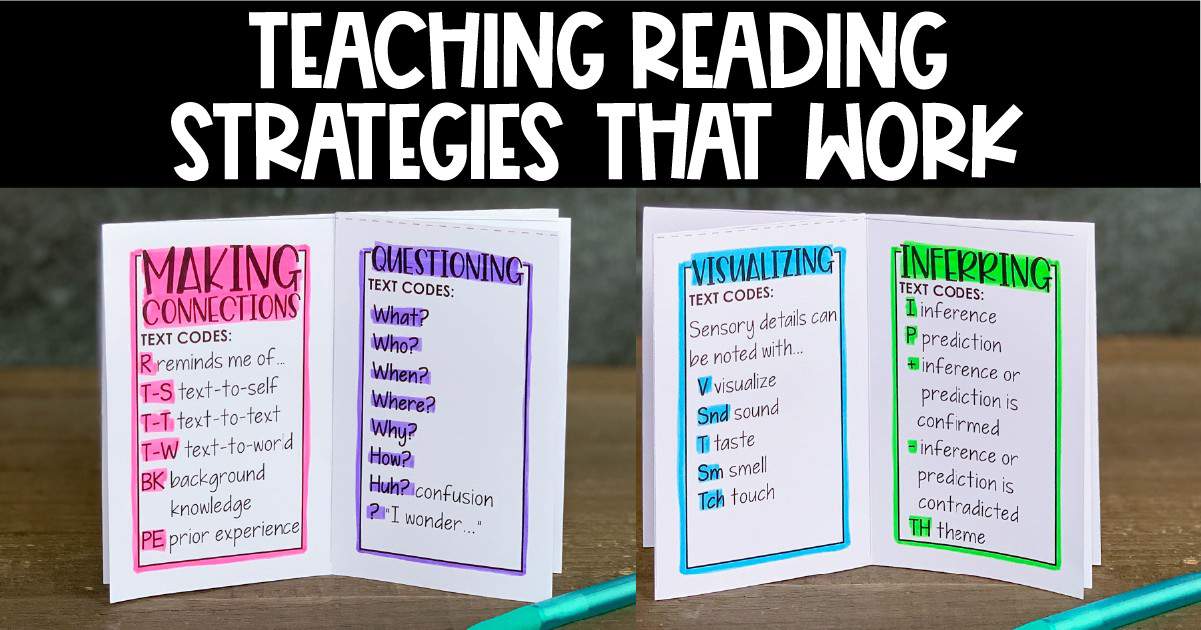 We must explicitly teach students how to use reading strategies to construct meaning when they read. The six strategies outlined below cover all aspects and subskills of reading. These reading strategies do not function in isolation; they work synergistically to help students fully access the text.
We must explicitly teach students how to use reading strategies to construct meaning when they read. The six strategies outlined below cover all aspects and subskills of reading. These reading strategies do not function in isolation; they work synergistically to help students fully access the text.
Strategy: Making Connections
When students make connections while reading, they are creating a bridge from new information to known information. There are three basic types of connections:
-
- Text-to-Self: Connections that readers make between the text and their background knowledge or past experiences.
- Text-to-Text: Connections that readers make between the text they are reading and other texts.
- Text-to-World: Connections that readers make between the text and topics or issues related to the world.
Strategy: Questioning
Questions are essential to learning and teaching, and they help move students forward in a text. Successful readers ask questions before, during, and after readings. They question to construct meaning, find answers, solve problems, clarify confusion, and discover new information.
Strategy: Visualizing
Visualizing is necessary for students to make text real and concrete. You might have heard this referred to as “creating a movie in the mind” based on the text. This strategy allows readers to place themselves in the story, and it strengthens their relationship with the text. Not only does it help with comprehension, but visualizing also stimulates imaginative thinking and increases engagement in the text.
Strategy: Inferencing
Inferencing occurs when readers merge their prior knowledge with clues from the text to make a conclusion. Readers must rely on inference skills when making predictions before and during reading. When students do not master this reading strategy, they cannot grasp the deeper essence of texts. Most questions from the second strategy (Questioning) require students to infer.
Strategy: Determining Importance
This reading strategy allows students to find a text’s essential elements. Students must be able to identify and remember important information. Readers utilize this strategy when determining an author’s purpose. When students are asked to summarize a text, they rely heavily on this reading strategy.
Strategy: Synthesizing
Synthesizing occurs when readers combine new information with prior knowledge to form an original idea. This reading strategy is like a jigsaw puzzle, where individual pieces are connected to form a new picture. Synthesizing allows readers to store information, so they can move on through the text.
If you want to incorporate these strategies in your instruction, I highly recommend Stephanie Harvey and Anne Goudvis’s book Strategies That Work. This book includes several lessons and a list of texts for each strategy.
FREE Reading Strategy Resources
Classroom Posters:
I created these free reading strategy “I can posters” that you can hang up in your classroom. They are excellent visuals that help guide students once the strategies have been explicitly taught. Note: These posters are designed to be printed on legal size (8.5 inches x 14 inches) paper.

Strategy Text Codes Mini-Book:
When students are annotating texts during close readings, they can use text codes to note what strategies they are using. This free mini-book includes easy-to-remember text codes for each strategy. It comes in two versions: One version is completely filled out, and the second version contains blank spaces where students can take their own notes. Just enter your email address in the form below, and it will immediately be sent to you. If you don’t see it in your inbox, check your spam/promotions folder. To ensure delivery, avoid using a school email address.
Reading Materials for Strategic Reading
These reading passages and text-dependent questions were specifically created with the purpose of close reading in mind. The texts (both fiction and nonfiction) are complex and high-interest, and the text-dependent questions are written according to Key Ideas and Details (Monday), Craft and Structure (Tuesday), and Integration of Knowledge and Ideas (Wednesday).












